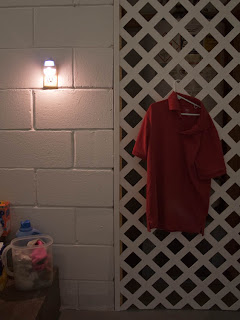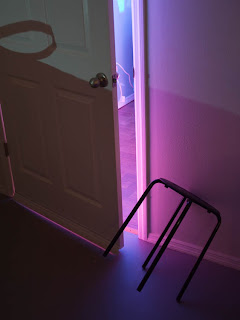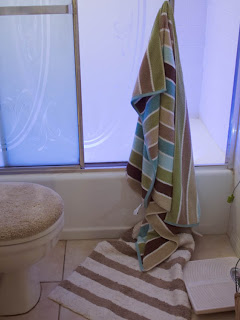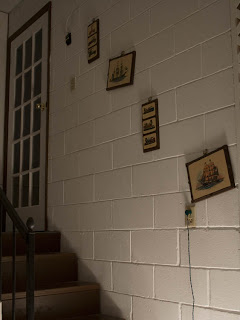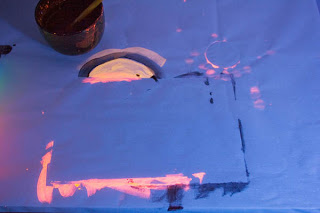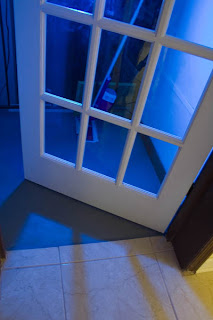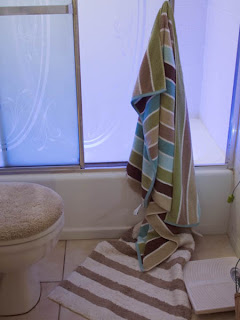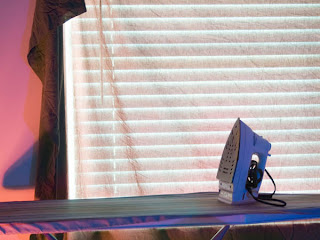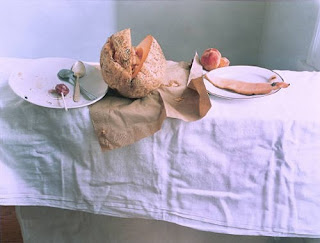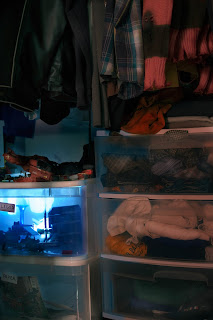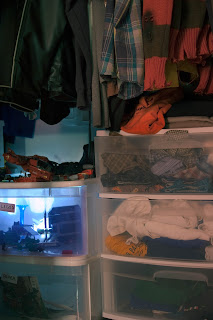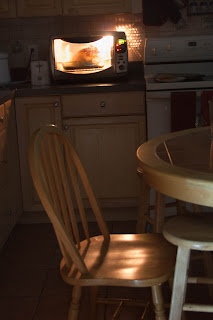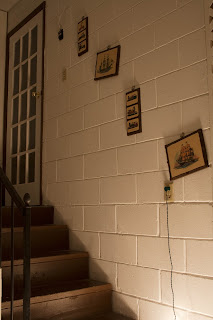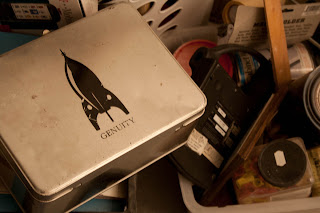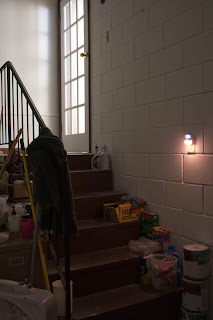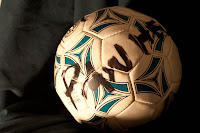Gregory Crewdson is interested in photographing seemingly complicated and staged scenes. Furthermore, as Pincus-Witten mentions, Crewdson also has a psychoanalysis subtext by having the viewer ponder about the behaviors/thoughts of the people photographed. They almost act as neighbors with secrets, hiding their own mystical world underneath their floor bed. The photographs have a simple narrative on the surface but complex undertones emerge the more we read the photo.

In the first photo, we first read the fire truck and broken car and simply read it as an accident. However, the officer in the bottom left reveals a mystical aura in the scene. What is this glow and what is the officer doing? The photo is more than just a car accident. As most of Crewdson’s photos, there is a question of what happened before and after the photo was taken.
One of noticeable qualities of Crewdson is his attention to lighting. Most evident is the usage of studio lighting alluding the cinema. As mentioned before, the question of what happened before/after the photo is evident in using the medium to tell a narrative like how cinema tells narratives. In the first photo, we see a young boy trying to get something down a drain. The pipe, hammer, screwdriver and nails hint to actions before the photo was taken while the dark blue basement alludes to what might happen after this photo. There is a straightforward element to Crewdson's photos and a bit of mystery as well. The second photo is even more enigmatic with the woman floating in the house. Why is the house flooded? Why is she so motionless; is she dead? The photo has an evident narrative but few hints to its meaning.


The following photos demonstrate Crewdson's interest of the spotlight. As Edward Leffingwell mentions, Crewdson references Steven Speilberg’s
Encounter with the Third Kind with the spotlights appearing like aliens. The third image of the group is most evident of this alien encounter quality with the strong light source emerging from the night sky and the lone person perplexed and looking into the light. The first image is interesting as it turns the source upside-down and has the light beams emerge from the ground. Yet the effect seems to still reference a similar idea.



Another focus of Crewdson is the preference of photographing during dawn, in between night and day.
Twilight describes the time as a moment of dreams and the unknown. Here the decision to photograph during this time enhances the image. The photo of the pile of flowers has a dreamy quality with this unusual grouping in the street with the people aware of the strangeness of the scene. Likewise, the second photo may have different lighting to the first but it too is taken between night/day. As a result, the artificial lighting of the house and bus have a staged look and appear to unnatural.


We can see this dreamy quality and attention of light in his photographs of fireflies. While visually these photos may appear different, b/w instead of color and an absence of people, the thematic elements are similar. We are presented with a fireflies in nature but are left pondering of their meaning. The illumination of the flies allude to the stage lights of Crewdson's other photos and we can imagine these photos being taken at twilight as well.


Crewdson, Gregory.
Fireflies. New York City: Skarstedt Fine Art, 2007. Print.
Crewdson, Gregory.
Twilight. 1st ed. New York City: Harry N. Abrams, 2002. Print.
Edward Leffingwell. (2000, July). Gregory Crewdson at Luhring Augustine.
Art in America, 88(7), 103-104. Retrieved October 3, 2010, from Arts Module. (Document ID: 56359101).
Pincus-Witten, R.. (2008, September). Gregory Crewdson.
Artforum, 47(1), 457. Retrieved October 3, 2010, from Arts Module.
"Gregory Crewdson." White Cube. N.p., n.d. Web. 3 Oct 2010.
website"Close Up: Gregory Crewdson." Art Forum. Web. 3 Oct 2010.
websiteAll photographs are untitled and by Gregory Crewdson.
